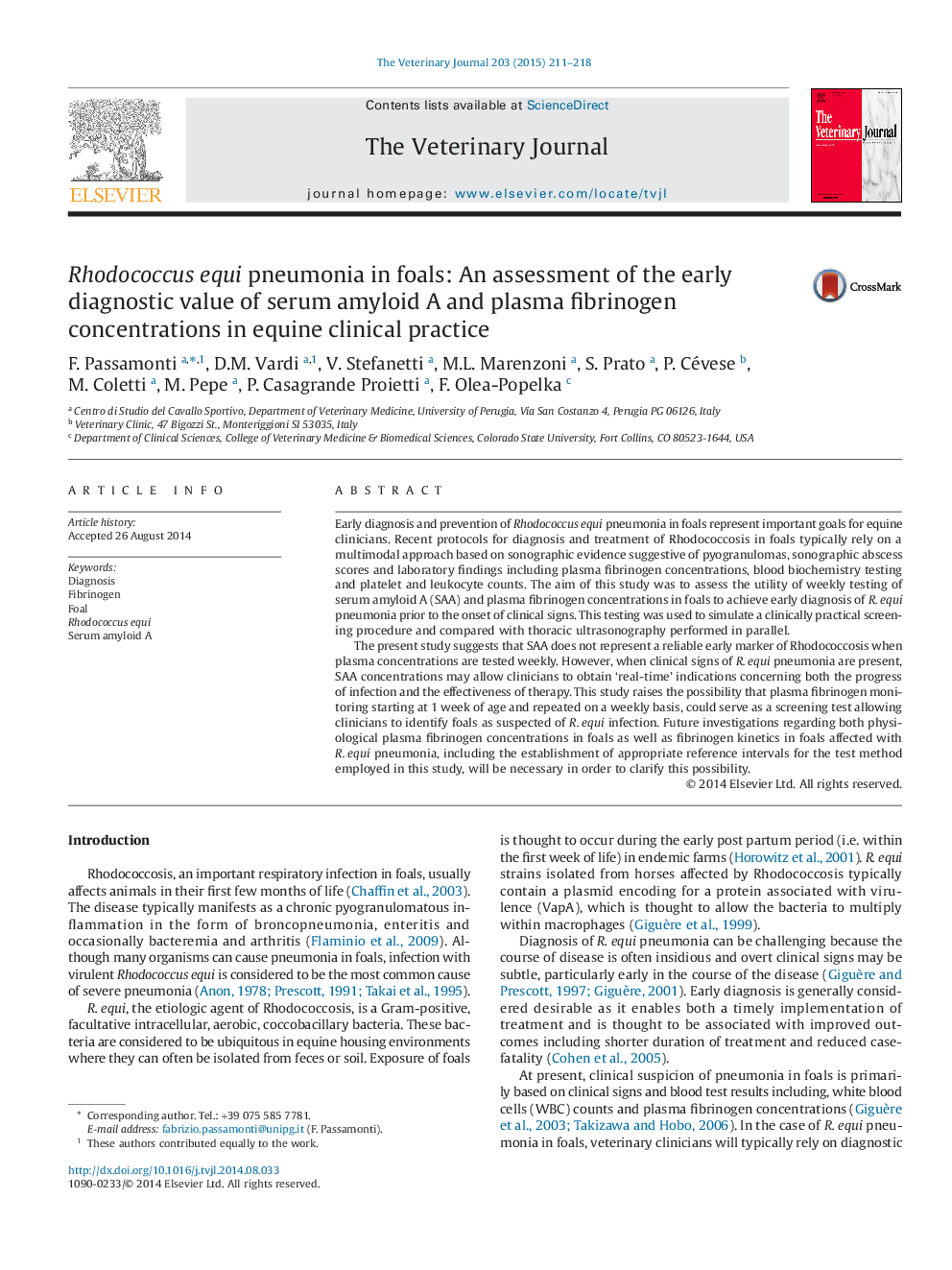| کد مقاله | کد نشریه | سال انتشار | مقاله انگلیسی | نسخه تمام متن |
|---|---|---|---|---|
| 5797606 | 1111756 | 2015 | 8 صفحه PDF | دانلود رایگان |

- We propose an early diagnostic method for Rhodococcus equi infection in foals.
- Serum Amiolid A and Fibrinogen were measured weekly in foals monitored by thoracic ultrasonography for in R.âequi infection.
- We suggest the possibility of screening using plasma fibrinogen concentrations for R.âequi infection.
Early diagnosis and prevention of Rhodococcus equi pneumonia in foals represent important goals for equine clinicians. Recent protocols for diagnosis and treatment of Rhodococcosis in foals typically rely on a multimodal approach based on sonographic evidence suggestive of pyogranulomas, sonographic abscess scores and laboratory findings including plasma fibrinogen concentrations, blood biochemistry testing and platelet and leukocyte counts. The aim of this study was to assess the utility of weekly testing of serum amyloid A (SAA) and plasma fibrinogen concentrations in foals to achieve early diagnosis of R.âequi pneumonia prior to the onset of clinical signs. This testing was used to simulate a clinically practical screening procedure and compared with thoracic ultrasonography performed in parallel.The present study suggests that SAA does not represent a reliable early marker of Rhodococcosis when plasma concentrations are tested weekly. However, when clinical signs of R.âequi pneumonia are present, SAA concentrations may allow clinicians to obtain 'real-time' indications concerning both the progress of infection and the effectiveness of therapy. This study raises the possibility that plasma fibrinogen monitoring starting at 1 week of age and repeated on a weekly basis, could serve as a screening test allowing clinicians to identify foals as suspected of R.âequi infection. Future investigations regarding both physiological plasma fibrinogen concentrations in foals as well as fibrinogen kinetics in foals affected with R.âequi pneumonia, including the establishment of appropriate reference intervals for the test method employed in this study, will be necessary in order to clarify this possibility.
Journal: The Veterinary Journal - Volume 203, Issue 2, February 2015, Pages 211-218